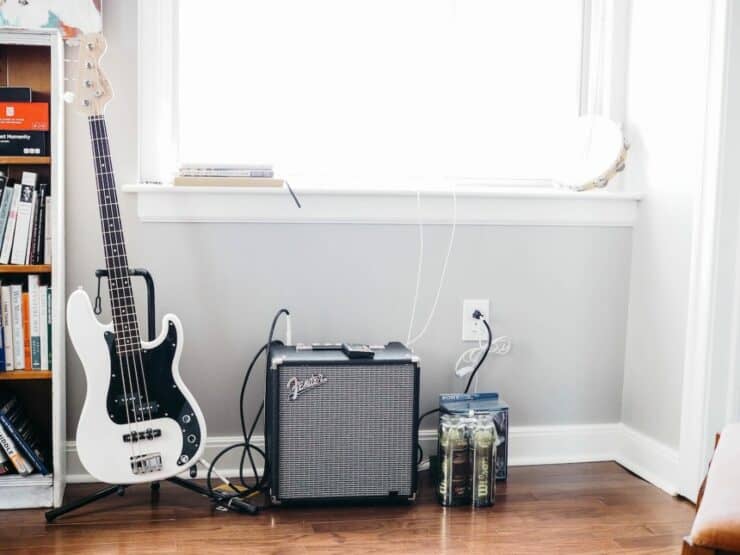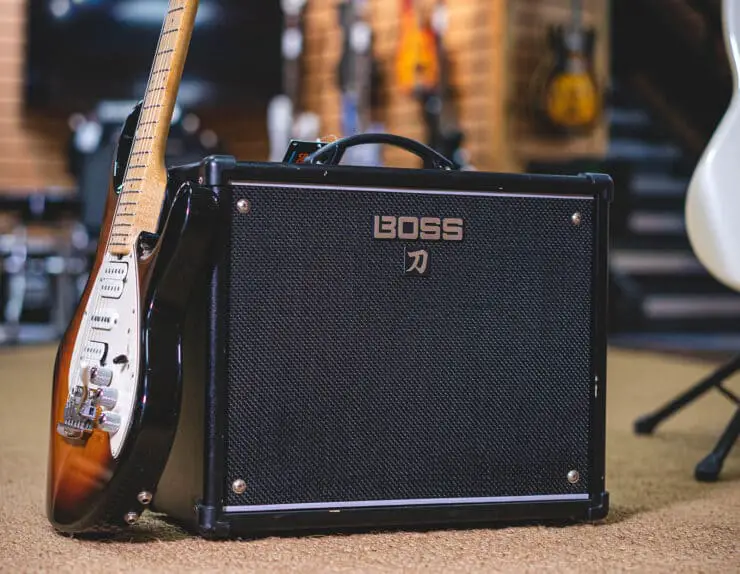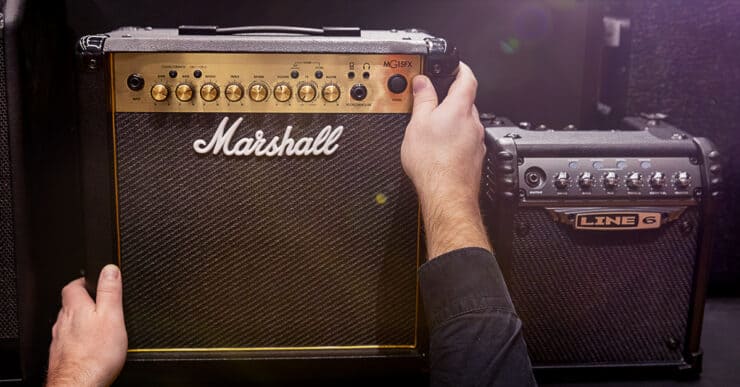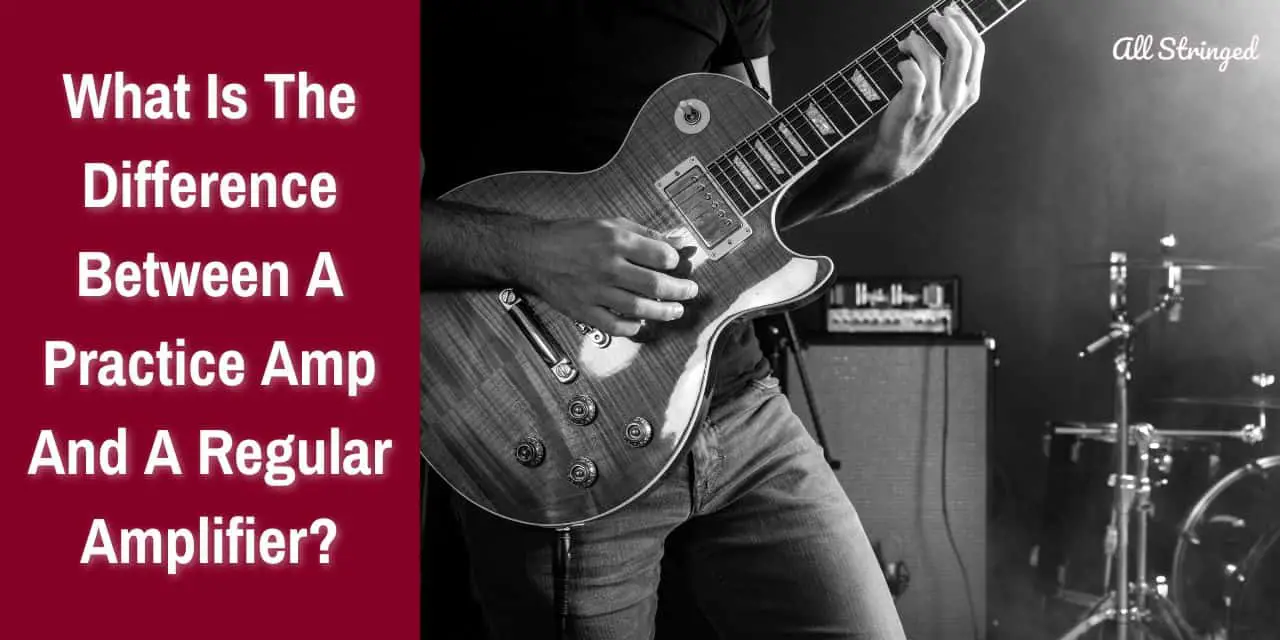What is the Difference Between a Practice Amp and a Regular Amplifier
Are you a guitar player looking to improve your playing? It can be confusing to understand the difference between a practice amp and a regular amplifier. If you want to become a better guitar player, it’s important to know the difference between these two items. In this article, you’ll discover the features and benefits of practice amps and regular amplifiers, so you can make an informed decision when selecting the right one for your needs. Read on to learn more and take your guitar playing to the next level.
What is a practice amp?
A practice amp is essentially a type of guitar amp designed for personal use, and it is typically for practicing playing guitar at home. Unlike larger studio amps designed for recording studios and live performances, practice amps tend to be smaller and less powerful. However, they still provide enough volume and tone shaping to help budding guitarists develop their skills. These small, portable amps are designed for home practice or small gigs. These amps are often compact, lightweight, and easy to use. They provide the guitarists with a way of practicing and honing their skills without actually disturbing others.
The primary function of a practice amp is that it produces a clear, accurate sound at low volumes. Unlike regular guitar amp, which is designed for live performances, practice amps generally have lower power ratings and smaller speaker sizes. This will allow them to produce high-quality sound at lower volumes without sacrificing tone or clarity.
Many practice amps come with tone controls, which allow the guitarist to shape their sound to their liking. This can be quite useful for practicing different styles of music or for experimenting with different tones. Some practice amps also come with built-in effects like delay or reverb, which can add further depth and character to the sound.
ALSO READ: Best Practice Amp: Top 7 Picks to Play Anywhere!
Another great benefit of practice amps is their portability. Many practice amps are rather lightweight and easy to transport, which makes them perfect for practicing on the go or taking to small gigs. Some models also run on batteries, which will allow you to practice anywhere without the need for a power source.

Benefits of using a practice amp
A practice amp is a great investment for any musician or guitarist who wants to improve their skills in a convenient and affordable way. Whether you are a beginner or an experienced musician, a practice amp will help you achieve your goals and take your playing to the next level. Practice amps come with a wide range of benefits that make them so popular among both seasoned veterans and beginner guitarists alike. Here are some of the key benefits of using a practice amp –
#1. Convenient size and portability
Practice amps are typically smaller and more compact compared to full-sized amps, which makes them easy to transport and store. This is especially useful for guitarists who want to practice in different locations or who might have limited space for their gear. Practice amps can fit on a desk or table easily, and they’re lightweight enough to take on the go.
#2. Ability to control volume
Practice amps typically come with a lower wattage than larger amps, but they still offer enough volume to practice with. Many practice amps also come with a headphone output, which allows the guitarists to practice silently without disturbing others. This is especially useful for musicians who live in apartments or other shared living situations where loud guitars might not be appreciated.
#3. Built-in effects and tone controls
Many practice amps come with built-in effects and tone controls, which allow musicians and guitarists to experiment with different sounds and tones. This can be quite useful for beginners who are still learning the different ways of creating different sounds on their guitars.
#4. Affordable prices
Practice amps are generally more affordable compared to larger amps, which makes them such a great option for beginners who are just starting out. They offer a cost-effective way of practicing guitar playing and experimenting with different tones and sounds.
#5. Improves playing technique
Practicing with a practice amp can help in improving guitar playing technique. With the ability to play at lower volumes, the guitarists will be able to focus on their playing without the distractions of a loud amp. This allows them to easily hear their mistakes and work on their technique to improve their overall playing ability.
#6. Versatility
Practice amps are versatile and can be used for different genres of music, whether it be jazz, rock, blues, or country. They offer a wide range of features and controls that allow musicians to experiment and explore different sounds.
What is a regular amp?
A regular guitar amp is an electronic device that amplifies the sound of an electric guitar or any other electric instrument. It typically consists of a speaker, an amplifier circuit, and different controls for adjusting the sound and tone of the instrument.
Regular guitar amps come in a wide variety of shapes and sizes, from small practice amps to larger stage amps. They’re powered by either batteries or an electronic outlet and range in power from a few watts to several hundred watts. Most regular guitar amps feature a number of controls that allow the guitarist to adjust the sound and tone of their instrument. These controls can include bass, treble, gain, volume, and mid-range among others. Some amps also come with built-in effects like chorus, distortion, and reverb.
Regular guitar amps are often used by guitarists in a wide variety of musical genres, including blues, rock, jazz, and country. They can be used in both practice and performance settings, and are often an important component of a guitar player’s setup. Regular guitar amps can be easily customized to suit the specific needs of the players. This can include adding external effect pedals or modifying the amp’s circuitry to achieve a specific sound or tone.
Benefits of regular amps
When it comes to guitar amps, there are a wide variety of options available, including studio amps, stage amps, and more. While practice amps offer various benefits for personal use, there are also numerous advantages of using a regular guitar amp for performances, gigs, and other live events. Here are some of the key benefits of using a regular guitar amp –
#1. Increased volume
Regular guitar amps generally offer more wattage and power compared to practice amps, which allows for increased volume and a fuller, more robust sound. This is especially important for live performances where a louder sound is required for filling a venue and is heard over other instruments and noise.
#2. Larger speakers
Regular guitar amps also come equipped with larger speakers compared to practice amps, offering a greater range of sound and a more dynamic tonal palette. This can be especially beneficial for guitarists who play different genres of music that need a wider range of sounds and effects.
#3. Customization features
Regular guitar amps often come with numerous customization features and controls compared to other types of amps, which allows for greater customization of sound and tone. This can include built-in effects, EQ settings, tone controls, and more. These features will allow guitarists to adjust their sound to their personal preferences and the specific needs of the performance.
#4. Durability
Regular guitar amps are built to withstand the vigors of live performances and touring, which makes them highly durable. They’re designed to withstand the wear and tear of being transported, set up, and taken down frequently, and exposed to different weather and environmental conditions.
#5. Versatility
Regular guitar amps are quite versatile and can be used for a wide variety of genres and playing styles. They can be easily used for anything from heavy metal to blues, and be adjusted to suit the specific sound and tone of the guitar being played.
#6. Aesthetics
Regular guitar amps can also be visually appealing, often featuring unique designs and colors to add to the stage presence of the performer. This can be important for musicians who want to make a visual statement on stage.

What is the difference between a practice amp and a regular amp?
When it comes to guitar amps, there are two main categories – practice amps and regular amps. While both types of amps are designed for amplifying the sound of an electric guitar, there are a few significant differences between the two. Here are some of the differences between a practice amp and a regular amp –
Power rating
One of the most significant differences between practice amps and regular amps is the power rating. Practice amps are typically low-powered, with wattage ranging from 1 to 30 watts. This makes them ideal for practicing at home or in small spaces, as they do not produce enough volume that disturbs neighbors or family members. Regular amps, on the other hand, can range from 30W to several hundred watts, which makes them suitable for playing in larger venues and with a full band.
Speaker size
Another major difference between practice amps and regular amps will be the speaker size. Practice amps generally have smaller speakers, which range from 6 to 12 inches in diameter. This is because smaller speakers are much more efficient at producing high frequencies, which are important for hearing individual notes and nuances when practicing. Meanwhile, regular amps often have larger speakers, which range from 10 to 15 inches in diameter. This allows them to produce a fuller and more powerful sound capable of filling a larger space.
Tone controls
Tone controls are a significant part of any guitar amp as they allow the guitarist to adjust the sound and tone of their instrument. Practice amps generally have a limited number of tone controls, usually just volume, gain, and tone. This is because they’re designed for practice and don’t need a lot of customization. Meanwhile, regular amps often come with more extensive tone controls, including bass, treble, and mid-range controls. This allows the musician or guitarist to tailor their sound to their specific preferences and the musical genre they are playing.
Effects
Effects are another key feature of guitar amps, which allows guitarists to add distortion, reverb, chorus, and other effects to their sound. While practice amps might have basic effects like distortion built-in, regular amps generally have more extensive effects capabilities. They often come with built-in effects processors or the ability to connect to external effects pedals, which allows for a wider range of sound and tone options.
Connectivity
There are also differences in connectivity between practice amps and regular amps. Practice amps generally have limited connectivity options, usually just a single input for the guitar and a headphone jack for private practice sessions. Regular amps often have multiple inputs for instruments and microphones, as well as built-in effects, loops, and external speaker output. This will make them more versatile for playing in a wide variety of settings, from small venues to massive stages.
Drawbacks of practice amps
While practice amps certainly offer a wide range of benefits, there are a few advantages that you should consider. Here are the potential drawbacks to keep in mind when choosing a practice amp –
#1. Limited power and volume
One of the main drawbacks of practice guitar amps will be their limited power and volume. These amps are designed for low-volume practice, which means that they might not be suitable for large venues and performances. If you intend to play gigs or jamming with others, you might require a more powerful amp.
#2. Limited tone controls
While many practice amps come with tone controls, they might not offer the same level of customization as a larger amp. This can make it quite difficult to achieve certain sounds or to replicate the tone of your favorite songs.
#3. Lacking in features
Practice amps also lack the additional features and effects that come with regular guitar amps. While some models might offer built-in effects or advanced features, they are typically not as extensive as those found on larger amps.
#4. Not as durable
Practice amps are often made using lower-quality components and might not be as durable as larger amps. If you intend to use an amp frequently or taking it on the road, you might have to invest in a more durable model.
#5. Limited resale value
Practice amps generally have lower resale values compared to larger and more powerful amps. If you intend to upgrade to a larger amp in the future, you might not be able to recoup as much of your investment when selling your practice amp.

Drawbacks of regular guitar amps
Just like practice amps, even regular guitar amps also come with certain disadvantages that you should consider. Here are some potential drawbacks to keep in mind when choosing a regular guitar amp –
#1. Excess size and weight
Regular guitar amps tend to be much larger and heavier compared to practice amps, which makes them more difficult to transport and store. If you have limited space or need to transport your amp frequently, a smaller practice amp might be a better choice.
#2. Relatively high cost
Regular guitar amps can be significantly more expensive compared to practice amps, especially if you are looking for a high-quality model that has advanced features and effects. If you are on tight budget, a practice amp might be the more affordable option.
#3. Not ideal for low volumes
While regular guitar amps come designed for larger venues and performances, they might not be suitable for low-volume practice. If you reside in an apartment or have to practice quietly, a practice amp with a headphone jack might be a better choice.
#4. Excess maintenance needed
Regular guitar amps need regular maintenance for keeping them functioning properly. This will include replacing tubes, cleaning the interior components, and other tasks that might be difficult or expensive to perform on your own.
#5. Limited portability
Regular guitar amps are generally designed for stationary use and might not be as portable as practice amps. If you need to move your amp frequently, you might have to invest in a smaller and more portable model or consider using a separate PA system.
How to choose between a practice amp and a regular amp?
When it comes to choosing between a practice amp and a regular guitar amp, there are a few considerations that you should keep in mind. Two of the most important factors include the type of music you intend to play and the budget –
Considerations for different types of music
First, it’ll be important to talk about the type of music you will be playing. Different genres of music require different types of amps. For instance, if you intend to play heavy metal or hard rock, you will want an amp capable of delivering plenty of distortion and a high-gain sound. In contrast, if you’re playing jazz or blues, you will want an amp capable of producing a warm, clean tone.
Practice amps are typically smaller and less powerful compared to regular amps. This makes them a great choice for practicing at home or in a small space. However, if you intend to play gigs or recording, you will require a larger and more powerful amp.
Budget considerations
In terms of budget, practice amps tend to be less expensive compared to regular amps. This is because they are smaller and less powerful, and often have fewer features. If you are just starting out, a practice amp might be a great choice as it’ll allow you to practice without breaking the bank.
With that said, it’ll be important to remember that the cost of a guitar amp is often proportional to its quality. While you can definitely find inexpensive amps that sound amazing, you will generally get what you are paying for. If you are serious about your music and plan on playing gigs or recording, it’ll be worth investing in a higher-quality amp.
Other considerations
In terms of power rating, tone controls speaker size, effects, and connectivity, there are various considerations. Practice amps are typically smaller and less powerful, with power ratings that range from 5W to 20W. Regular amps, meanwhile, range from around 30W to 100W or more.
Speaker size will be another key consideration. Practice amps come with smaller speakers, while regular guitar amps might have larger speakers that can produce a fuller and richer sound. Tone controls and effects are important to consider as well. While practice amps might have basic tone controls, regular amps have a wider range of tone-shaping options and built-in effects like delay and reverb.
Connectivity will be another consideration. Practice amps have a limited range of inputs and outputs, whereas regular amps might have more options for connecting to external devices like mixers, pedals, and recording equipment.
FAQs
What is the main difference between a practice amp and a regular amplifier?
A practice amp is designed specifically for practicing and typically has lower wattage, smaller speaker size, and simpler controls compared to a regular amplifier. Practice amps are more compact and portable, making them ideal for use at home or on the go. Regular amplifiers, on the other hand, are designed for performance and often have higher wattage, larger speaker size, and more advanced features.
What are the benefits of using a practice amp for guitar practice?
Using a practice amp has several benefits, including its portability, lower volume levels, and ease of use. Practice amps also typically come with headphone jacks, allowing for silent practice. This makes them ideal for practicing at home or in other environments where a full-sized amplifier may not be suitable.
When should I use a regular amplifier instead of a practice amp?
A regular amplifier is typically used for performance and is designed to provide a more powerful sound with greater volume and projection. They are ideal for live performances and recording sessions where a more dynamic sound is required. If you are practicing for a performance or recording, it may be a good idea to use a regular amplifier to get a feel for what you will experience when you perform. However, if you are practicing at home or on the go, a practice amp may be a more convenient and suitable choice.



